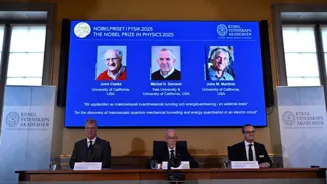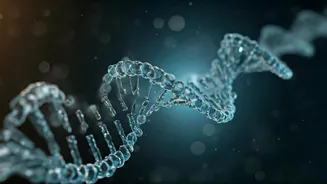Unveiling Quantum Mysteries
Quantum physics, a revolutionary branch of physics, drastically reshaped our comprehension of the universe's fundamental components. Unlike classical physics, which
offers a deterministic view, quantum physics introduces probabilities and uncertainties, especially at the atomic and subatomic levels. It moves away from Newton's predictable laws. Instead, it describes the world in terms of probabilities, meaning we can only predict the likelihood of an event, not its exact outcome. This shift is key to understanding the weird and wonderful aspects of quantum theory, such as superposition and entanglement. These theories challenge everyday intuitions about how the world functions. They show that particles can exist in multiple states at once and can be linked in ways that seem to defy distance, making it an exciting area of study.
Quantum Tunneling Explained
One of the most bizarre concepts in quantum physics is quantum tunneling. Imagine a particle, like an electron, trying to pass through a barrier, such as a wall. In classical physics, the particle would need enough energy to overcome the barrier; otherwise, it would bounce back. However, in quantum mechanics, the particle has a non-zero probability of 'tunneling' through the barrier, even if it doesn't have enough energy to do so classically. This is because of the wave-like nature of particles. They're not just point-like objects but spread out like waves. When these waves encounter a barrier, they can 'leak' through, which means there's a chance the particle will appear on the other side. This effect is crucial in many areas, like nuclear fusion in the sun and the functioning of certain electronic devices. It illustrates the probabilistic nature of quantum physics, where events aren't certain, but rather, they happen with a certain probability.
Energy's Staircase
Quantized energy is a core concept in quantum physics. It signifies that energy doesn't come in a continuous stream but rather in discrete packets, known as quanta. Think of it like a staircase instead of a ramp. A particle can only exist at specific energy levels, similar to how you can only stand on certain steps of a staircase. It can't be at an energy level in between. This idea contrasts with classical physics, which allows energy to take on any value. The discovery of quantized energy by physicists like Max Planck marked a significant shift in how we understand the behavior of energy at the atomic level. This concept is vital in understanding atomic spectra, where atoms emit or absorb energy in specific, distinct wavelengths. Every element has its unique spectral fingerprint, because of its specific energy levels.
The Real Multiverse
The concept of the multiverse, often depicted in science fiction, has a more grounded foundation in quantum physics. It arises from how the universe is viewed through the lens of quantum mechanics. Specifically, it is linked to the interpretation of quantum mechanics, mainly the Many-Worlds Interpretation. This theory suggests that every quantum measurement causes the universe to split into multiple universes, each representing a different possible outcome. So, when a particle can be in multiple states simultaneously, each state exists in a separate universe. This is a highly debated idea in physics. However, it highlights the profound implications of quantum mechanics. These imply that our universe might only be a small part of a much larger, more complex structure. This theory poses questions about reality and the nature of existence, providing ample space for scientific exploration.
Quantum Computing's Future
Quantum computing leverages the principles of quantum mechanics to perform complex computations in ways that classical computers cannot. Instead of bits, which can be either 0 or 1, quantum computers use qubits. Qubits can exist in a superposition, meaning they can be both 0 and 1 simultaneously. This allows quantum computers to process vast amounts of information in parallel, exponentially speeding up computations. Quantum computers could revolutionize various fields. These include medicine, materials science, and cryptography. They can simulate molecular interactions, design new drugs, and break existing encryption methods. While quantum computing is still in its early stages, with significant technological hurdles to overcome, the potential benefits are huge. The development of quantum computers marks a huge step towards harnessing the full potential of quantum mechanics for practical applications, and is one of the most exciting current applications.







